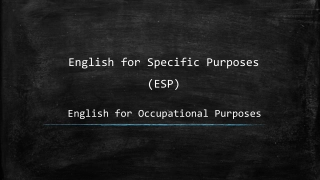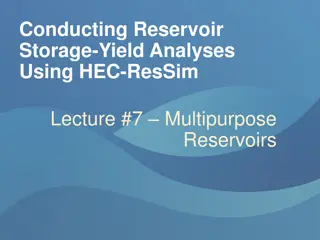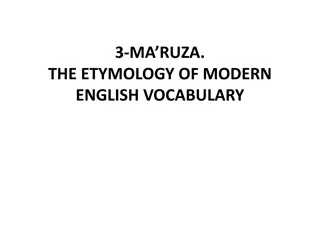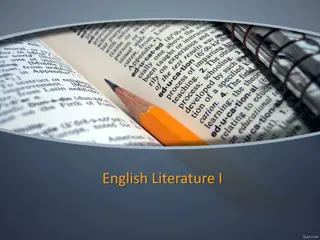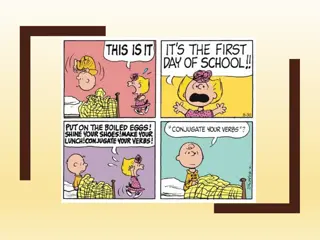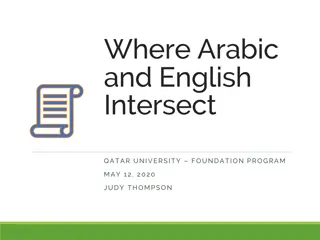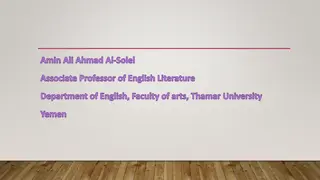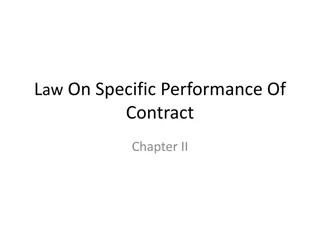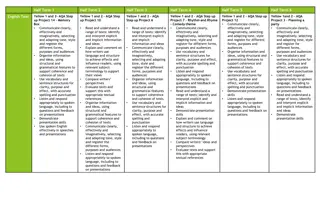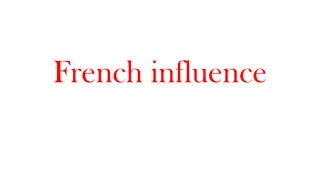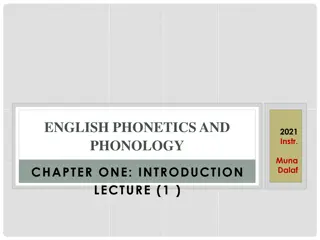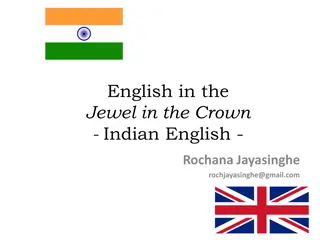English for Specific Purposes: An Overview
English for Specific Purposes (ESP) focuses on teaching English to fulfill specific needs in domains such as disciplines, occupations, and activities. It is different from General English and offers tailored content to meet learners' objectives efficiently. The comprehensive definitions by Paltridge and Starfield, as well as Strevens, outline the absolute and variable characteristics of ESP, emphasizing learner-centered approaches that save time, enhance relevance, and are cost-effective. This overview also delves into the game of football, highlighting its rules, objectives, and player configurations.
Download Presentation

Please find below an Image/Link to download the presentation.
The content on the website is provided AS IS for your information and personal use only. It may not be sold, licensed, or shared on other websites without obtaining consent from the author.If you encounter any issues during the download, it is possible that the publisher has removed the file from their server.
You are allowed to download the files provided on this website for personal or commercial use, subject to the condition that they are used lawfully. All files are the property of their respective owners.
The content on the website is provided AS IS for your information and personal use only. It may not be sold, licensed, or shared on other websites without obtaining consent from the author.
E N D
Presentation Transcript
ESP ENGLISH FOR SPECIFIC PURPOSES Hezha Hamid Mustafa
ESP Paltridge and Starfield s (2013, p. 2) definition: English for specific purposes (ESP) refers to the teaching and learning of English as a second or foreign language where the goal of the learners is to use English in a particular domain.
The most comprehensive definition Streven s (1988, pp. 1-2) definition: 1) Absolute characteristics: ESP consists of English language teaching which is: designed to meet (specified needs of the learner) related in content in its themes and topics to particular disciplines, occupations and activities. in contrast with General English
2) Variable characteristics: ESP may be, but is not necessarily: restricted as to the language skills to be learned (e.g., reading only) not taught according to any pre-ordained methodology Claims. The claims for ESP are: being focused on the learner s need, wastes no time is relevant to the learner is successful in imparting learning is more cost-effective than General English
Football Football, also called association football or soccer, game in which two teams of 11 players, using any part of their bodies except their hands and arms, try to maneuver the ball into the opposing team s goal. Only the goalkeeper is permitted to handle the ball and may do so only within the penalty area surrounding the goal. The team that scores more goals wins.
Object of the Game The aim of football is to score more goals than your opponent in a 90 minute playing time frame. The match is split up into two halves of 45 minutes. After the first 45 minutes players will take a 15 minute rest period called half time. The second 45 minutes will resume and any time deemed fit to be added on by the referee (injury time) will be accordingly.
Players Each team consists of 11 players. These are made up of one goalkeeper and ten players.
Scoring To score the ball must go into your opponent s goal. The whole ball needs to cross the line for it to be a legitimate goal. A goal can be scored with any part of the body apart from the hand or arm up to the shoulder. The goal itself consists of a frame measuring 8 feet high and 8 yards wide.
Winning the Game To win the game you have to score more goals than your opponent team. If the scores are level after 90 minutes than the game will end as a draw, apart from in cup games where the game can go to extra time and even a penalty shootout to decide the winner. Players must use their feet to kick the ball and are prohibited to use their hands apart from goalkeepers who can use any part of their body within the 18 yard box .
Rules of Football (Soccer) A match consists of two 45 minutes halves with a 15 minute rest period in between. Each team can have a minimum off 11 players (including 1 goalkeeper who is the only player allowed to handle the ball within the 18 yard box) and a minimum of 7 players are needed to constitute a match. The field must be made of either artificial or natural grass. The size of pitches is allowed to vary but must be within 100-130 yards long and 50-100 yards wide.
The ball must have a circumference of 58-61cm and be of a circular shape. Each team can name up to 7 substitute players. Substitutions can be made at any time of the match with each team being able to make a maximum of 3 substitutions per side. Each game must include one referee and two assistant referee s (linesmen). It s the job of the referee to act as time keeper and make any decisions which may need to be made such as fouls, free kicks, throw ins, penalties and added on time at the end of each half. if a ball goes out of play off an opponent in either of the side lines then it is given as a throw in. If it goes out of play off an attacking player on the base line then it is a goal kick. If it comes off a defending player it is a corner kick.
If the game needs to head to extra time as a result of both teams being level in a match then 30 minutes will be added in the form of two 15 minute halves after the allotted 90 minutes. If teams are still level after extra time then a penalty shootout must take place. The whole ball must cross the goal line for it to constitute as a goal. For fouls committed a player could receive either a yellow or red card depending on the severity of the foul; this comes down to the referee s discretion. The yellow is a warning and a red card is a dismissal of that player. Two yellow cards will equal one red. Once a player is sent off then they cannot be replaced.



